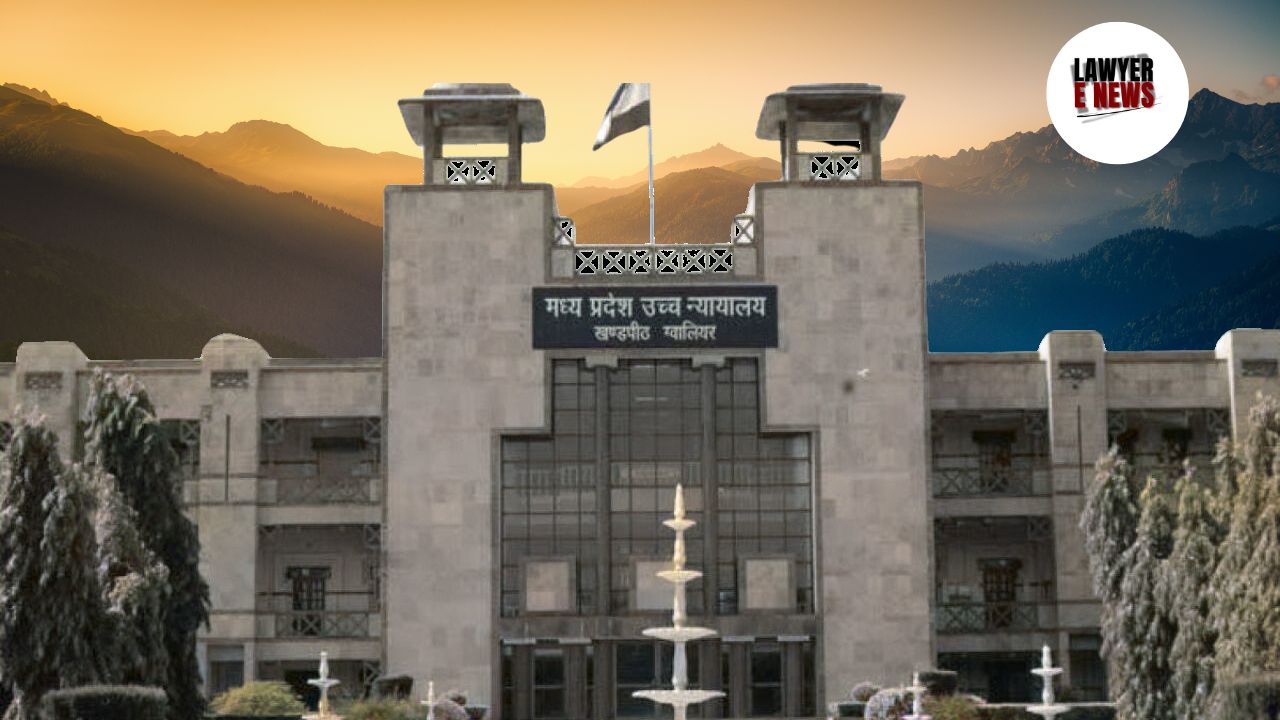-
by Admin
18 December 2025 4:03 PM



In response to public interest litigations (PILs) filed after a tragic school bus accident in Indore that claimed the lives of four children and a driver, the Madhya Pradesh High Court has issued a detailed set of guidelines to regulate the safety and operation of school buses in the state. The guidelines will remain in effect until the Madhya Pradesh government amends its Motor Vehicles Rules to incorporate specific provisions for school transportation.
The PILs were filed following the accident involving a school bus operated by Delhi Public School (DPS), Nipania, on January 5, 2018. The bus, which was reportedly not maintained adequately, overturned, leading to multiple fatalities and injuries. The incident sparked outrage and prompted demands for stricter safety regulations for school buses.
Several PILs were filed in the wake of the accident, seeking relief for the victims’ families, stricter enforcement of safety norms for school buses, and accountability of school management and authorities. The petitioners highlighted the negligence in maintaining the bus and failure to adhere to safety standards as the primary causes of the accident.
The key reliefs sought included compensation for victims, criminal prosecution of school management, and the formulation of safety guidelines to prevent such incidents in the future.
The Court noted that appropriate compensation had already been paid by the DPS management, including covering medical expenses for injured students and their families. Claims pending under the Motor Vehicles Act would be adjudicated by the appropriate tribunal, as the issue of compensation falls outside the scope of a PIL.
An FIR had been registered against the school management and relevant authorities under provisions of the Indian Penal Code (IPC), and the charge sheet was filed on April 6, 2018. The Court deemed no further directions necessary in this regard.
Acknowledging the lack of specific safety regulations in the Madhya Pradesh Motor Vehicles Rules, 1994, the Court drew inspiration from the amended Chhattisgarh Motor Vehicles Rules, 1994, to frame comprehensive interim guidelines for school bus safety:
Mandatory Yellow Paint and Signage: All school buses must be painted yellow with "School Bus" or "On School Duty" displayed prominently on the front and rear. The name, address, and contact number of the school must be displayed on the bus.
Safety Features: Buses must be equipped with horizontal grills on windows, first aid kits, fire extinguishers, emergency doors, and reliable locking systems.
Driver Eligibility: Drivers must have a minimum of five years of experience, with no record of serious traffic violations (e.g., drunken driving, overspeeding). Regular medical and criminal background checks are mandatory.
Monitoring and Surveillance: GPS tracking systems, CCTV cameras, and a designated school staff monitor must be implemented for all school buses.
Vehicle Fitness and Maintenance: Regular fitness certification, pollution control checks, and routine maintenance are mandatory. The maximum permissible age of a school bus is 12 years.
Space and Passenger Limits: Buses must have dedicated space for school bags under the seats. Only students, authorized guardians, or teachers are allowed on board.
Authorities’ Role: Regional Transport Officers (RTOs) and traffic police are responsible for enforcing compliance with the Motor Vehicles Act, Madhya Pradesh Motor Vehicles Rules, and the Court’s guidelines.
School Management Responsibilities: Schools must appoint a staff member to oversee bus safety and compliance. A teacher must accompany students throughout the bus route.
Publicity and Awareness: The state government was directed to publicize the guidelines among schools and ensure strict adherence.
Special Instructions for Auto-Rickshaws: No more than four passengers, including the driver, are allowed in auto-rickshaws transporting schoolchildren.
The Court emphasized that safety regulations for school transportation should be prioritized under existing laws, including the Motor Vehicles Act, 1988. However, it observed a legislative gap in addressing the specific safety needs of school buses in Madhya Pradesh. Drawing from Supreme Court precedents such as M.C. Mehta v. Union of India (1999), the Court reiterated the judiciary’s responsibility to step in when legislative and executive action is lacking.
Justice Vivek Rusia, delivering the judgment, remarked:
“The safety of children traveling in school buses is paramount. These guidelines are necessary to ensure that such tragic incidents are not repeated. The government must act promptly to incorporate these standards into the legal framework.”
The guidelines will remain in force until the Madhya Pradesh government amends the Motor Vehicles Rules, 1994, to include specific provisions for school bus safety. The Court directed the state government to expedite the legislative process.
The Court disposed of the PILs with directions to the state government, RTOs, school managements, and law enforcement authorities to comply with the interim guidelines. The judgment emphasized that public safety must take precedence and urged proactive measures to protect schoolchildren.
Date of Decision: December 4, 2024
